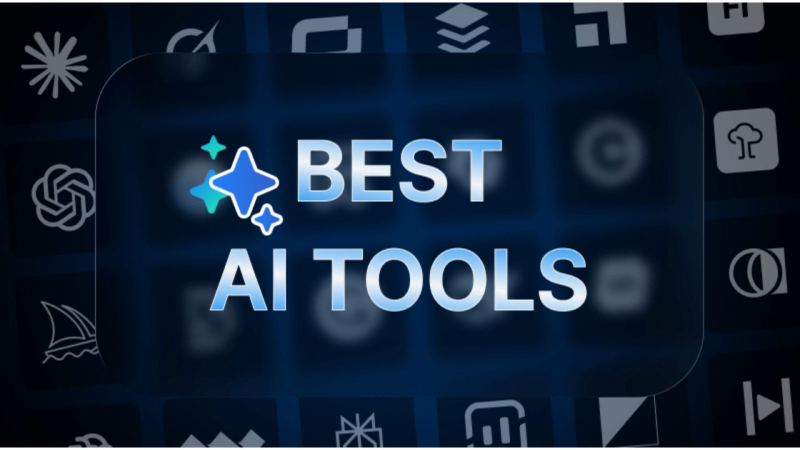Small businesses face a big problem: stacks of invoices, receipts, purchase orders, and bank statements can take hours to process. Entering data manually is slow, error-prone, and tedious — and it eats into valuable time that could be better spent growing the business. AI-powered OCR (optical character recognition) and document automation tools offer a compelling solution, turning scanned or emailed invoices into structured, usable data — automatically. But which ones are actually affordable for small businesses, especially in India and other developing markets?
Here’s a look at what to look for, what affordable options are out there, and how to pick the right one for your needs.
What makes an AI data-entry tool “affordable”?
When evaluating tools, price isn’t the only factor. Here are several dimensions worth considering:
- Free trial or free tier
The ability to test the tool with your documents — without paying upfront — is crucial. If the free tier is generous, you can assess accuracy, ease of use, and integration without risk. - Per-page / per-document pricing vs. subscription
If your invoice volume is low, a per-document or pay-as-you-go pricing model can be more cost-effective than a flat monthly subscription. But if you process large volumes, a flat subscription or bundle might turn out cheaper. - Template flexibility and layout adaptability
If your invoices or receipts come in a variety of formats (from many vendors, lots of layout variations, different languages or handwritten notes), you want a tool that doesn’t require rigid template setup. Manual corrections after processing can quickly eat into your savings. - Integration capabilities
Ideally, your OCR or document automation tool should export data to Excel, Google Sheets, Tally, or directly into your accounting or ERP system. This saves time and prevents double data entry or reconciliation headaches. - Accuracy and ease of use
A cheap tool isn’t helpful if it is so inaccurate that it requires hours of manual correction. Accuracy, especially for key fields like invoice number, vendor name, date, totals, and line items, is a key driver of real savings. Tools that are easy to set up and don’t require technical expertise are better for small businesses without a dedicated IT staff. - Localization and compliance
If you're operating in India, it helps if the tool handles formats, languages, GST tax fields or accounting workflows common in India. Local support or Indian-specific integrations (with Tally, Indian GST formats, etc.) can reduce friction and errors.

Affordable Tools Worth Considering
Here are some AI / OCR / document automation tools that are well-suited to small businesses. They vary in price, flexibility, and suitability depending on your volume and document types — but each of them is relatively affordable for low-to-mid usage scenarios.
- BillBjorn is often cited as a low-cost invoice scanning and OCR tool. Pricing starts from around US$5/month for 50 documents, up to US$65/month for 2,500 documents billed annually — making it one of the cheaper “invoice OCR” options out there.
- DocuClipper offers invoice OCR and line-item extraction, and states that manual invoice processing can cost businesses $15–$30 per invoice, which OCR can reduce by up to 80%.
- Cflow provides invoice OCR combined with no-code workflow automation. The tool promises more accurate and faster invoice data extraction, better audit tracking, and tighter integration with accounts payable workflows.
Tools like AI Accountant (for bank statement and invoice OCR) are being used in CA and small finance teams, offering features such as Tally and Zoho Books integration, GST-aware categorization, and ledger-ready exports.
There are also outsourcing-based OCR/data-entry service providers in India, such as Om Data Entry India and Outsource2india, which offer manual or semi-automated OCR conversion, cleanup, and data extraction services. These aren’t pure AI tools, but they can be cost-effective when document volumes are high or when accuracy matters.
Choosing the Right Tool Based on Your Needs
Here’s a rough guide to selecting what might work best depending on your use case:
- Low volume, basic invoices: If you're a small vendor or freelancer and only have a handful of invoices or receipts each month, a tool with a free tier or low per-document cost (like BillBjorn) can help you test and automate without committing to expensive subscriptions.
- Mixed vendors and formats: If you get invoices in many formats, from different suppliers, and in different layouts (physical paper, scanned, emailed, handwritten, etc.), you want a tool that is “template-free”, meaning it doesn’t require you to define a fixed invoice template for each supplier. Flexibility helps avoid time-consuming template setup and manual corrections. That makes tools like DocuClipper or AI Accountant more attractive.
- Integration with Indian accounting systems: If you’re operating in India and using tools like Tally, Zoho Books, or you need to comply with Indian GST and tax formatting, look for tools that offer native exports or mappings for Indian ledgers, GST fields, or accountant workflows. This will reduce the hassle of cleaning up exported data for local tax submission or accounting.
- Higher volume, scaling up: If your invoice/receipt volume is growing — say, hundreds or thousands of documents per month — then a flat-priced subscription or a workflow automation (OCR + approval + export) tool can make more sense. You may also want features like line-item capture, PO matching, automatic approval routing, and audit trails. Even if the sticker price is higher, the time savings and error reductions often justify the cost. Tools with built-in workflows (Cflow or other invoice automation platforms) can become more cost-effective at that scale.
A Quick Example
Imagine a small Gurugram-based vendor who receives 50–100 paper or PDF invoices per month, some of which are from small suppliers with handwritten notes, or come as scanned photos. The vendor uses Tally and wants to automate invoice entry, but doesn’t want to pay a big monthly subscription for invoice automation — and definitely doesn’t want to spend time manually correcting dozens of OCR errors every month.
In such a scenario:
- A low-cost OCR tool that offers a free or cheap test run (say, 50 documents) is a good starting point — so you can test how well it extracts invoice numbers, dates, totals, vendor names, etc.
- If the test extraction works well, a tool that allows exporting to Excel or CSV cleanly, or ideally directly to Tally or GST-compatible formats, would minimize manual cleanup.
- If correction overhead is low, then continuing with a pay-per-document or low-tier subscription might make sense. If the correction overhead is high or the OCR regularly misreads important fields, you might either:
- manually verify and correct on every invoice (defeating the cost/time savings), or
- switch to a higher-end OCR or automation tool that has smarter layout recognition or validation, or
- outsource the final cleanup step to a service that handles messy scans or handwriting.
The goal is to find a balance — at low volume, you're looking for minimal subscription cost and minimal manual correction time. If a cheap tool ends up requiring a lot of manual corrections, it defeats the purpose.
Final Thoughts
Automation of data entry is one of those changes that can dramatically reduce time and error costs — but only if the automation works reliably for your documents, and doesn’t introduce more headaches than it solves. For small businesses, the cheapest tool isn’t necessarily the best — but neither is the most expensive.
What really matters is finding a tool that reduces your manual work more than its own setup or subscription effort costs you. If the tool saves you even just a few hours of typing or correction each month, it can pay for itself quickly — and allow you to focus more on growing your business, rather than bookkeeping.
If you want, I can run a side-by-side comparison of a few recommended tools for your situation — based on how many invoices you process, whether they’re handwritten or scanned, and which accounting tools you’re using
Post Comment
Be the first to post comment!





